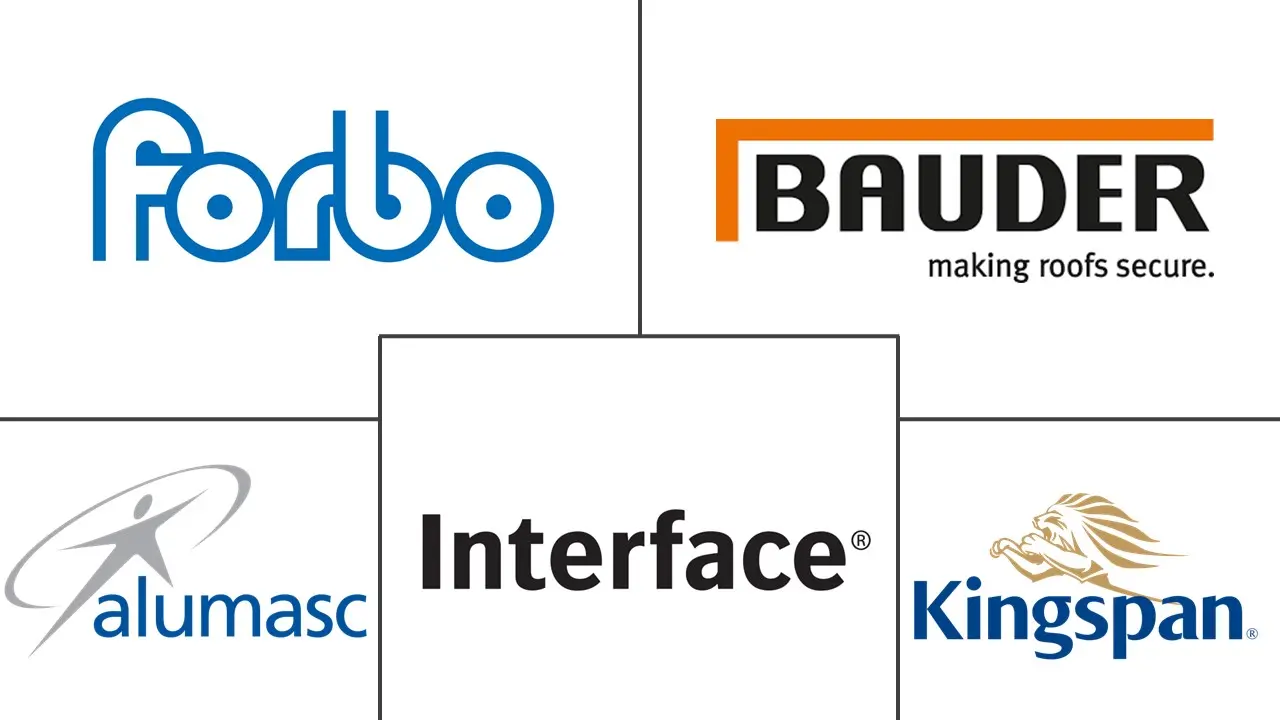GCC Green Buildings Market Size and Share
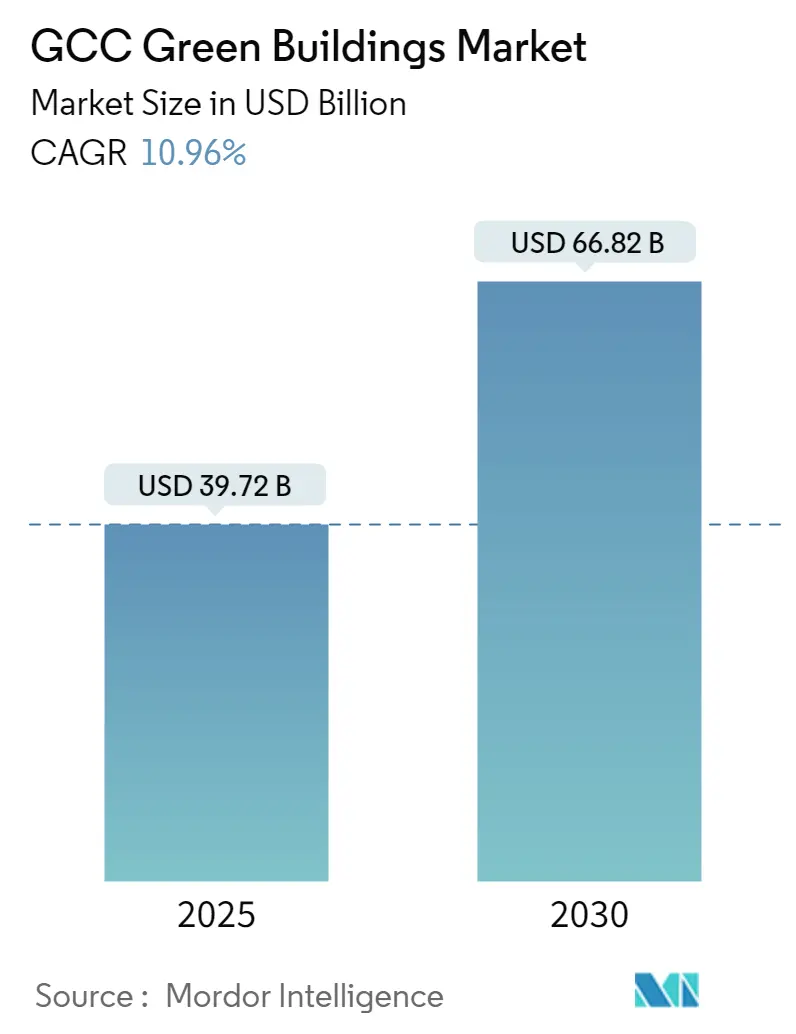
GCC Green Buildings Market Analysis by Mordor Intelligence
The GCC Green Buildings Market size is estimated at USD 39.72 billion in 2025, and is expected to reach USD 66.82 billion by 2030, at a CAGR of 10.96% during the forecast period (2025-2030).
- The market for green building materials in the Gulf Cooperation Council is on the rise, driven by critical drivers and evolving trends reinforcing the regional commitment to sustainable building practices. The growing awareness and emphasis on the responsibility of the environment throughout the region is a significant driver.
- To improve the quality of life and enhance urban landscapes, Saudi Arabia's Housing Minister stressed the importance of green buildings. The KSA Vision 2030 focuses on sustainable development and aims to reduce the country's oil dependence.
- In the Middle East, green buildings are constructed in such a way as to reduce energy consumption by nearly 50%. One of the best examples of using solar power to generate electricity is the Irena building in Masdar, Abu Dhabi.
- LEED Certification is a globally recognized rating system that assesses buildings' environmental performance and sustainability. The certification of the LEED standard is intended to encourage energy efficiency, water conservation, and green building practices essential for Saudi Arabia's sustainability. Saudi Arabia has made considerable progress toward adopting Sustainable Building Practices since October 2023, with 1,851 approved LEED projects. Out of the country's commitment to environmental and energy efficiency standards, 1,168 projects was awarded recognition.
- In recognition of their outstanding performance in energy efficiency, water conservation, and indoor environmental quality, 244 projects was awarded the prestigious Gold certification. In addition, the highest level of recognition, Platinum, was achieved by 216 projects, highlighting Saudi Arabia's commitment to pushing the boundaries of sustainability and environmental friendliness.
- In line with the commitment of organizations and builders in Saudi Arabia to build greener and more sustainable buildings, a significant number of 663 projects were awarded the Silver certification. These figures show that the country's construction sector has become increasingly associated with LEED certification, essential in protecting the environment and reducing resource use.
GCC Green Buildings Market Trends and Insights
Increase in Residential Green Building Development
Nearly 5,300 projects in the Middle East and North Africa region, representing over 1.5 billion square meters of space, have adopted LEED since August 2023. The United Arab Emirates, in particular, is home to some of the world's most critical green projects, such as Masdar City in Abu Dhabi and the world's first LEED Platinum-certified mosque in Dubai.
As the United Arab Emirates prepares to host the 28th session of the Conference of the Parties, it continues strengthening its commitment to sustainability. In December 2022, it adopted the most essential national building regulations and standards. These aim to reduce energy consumption in buildings by up to 25%.
In the Middle East, Saudi Arabia has the largest concentration of LEED-certified buildings. The country's target to achieve 15% of its total energy needs from renewable sources by 2030 could be the main reason for this increase in sustainable real estate projects. Green Core is a compact residential building in Kuwait with sustainable construction techniques. A six-apartment building is designed around a centrally oriented core.
Abu Dhabi was the first of the seven Emirates to adopt a dedicated green building certification regime with the introduction of the 2010 Pearl Building Rating System (PBRS). The Abu Dhabi Urban Planning Council developed this as part of Estidama, a building methodology whose name is the Arabic word for sustainability.
Hence, the residential sector in GCC has a potential to be a major driver of the green buildings market by increase in demand for sustainable homes and adapting green practices and collaborating for further innovations. The GCC can create a thriving market for environmental responsible living spaces contributing to a greener future.
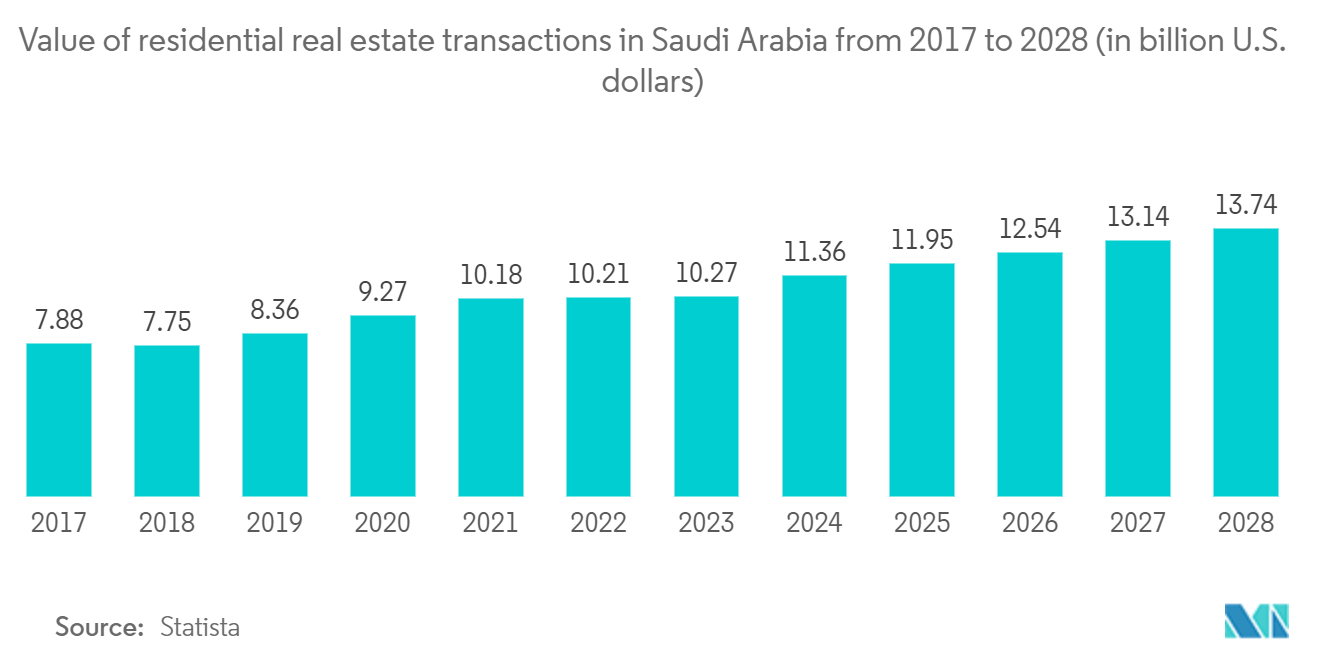
United Arab Emirates is Dominating the Market
Green architecture consultancy in the United Arab Emirates has recently seen a substantial increase in interest due to an increasing focus on sustainable development and environmental consciousness. The environmental impact of building and infrastructure projects must be managed urgently, given the accelerating pace of urbanization and expansion within the United Arab Emirates.
By 2030, the UAE government has set a target to have 50% of all buildings in Dubai be sustainably built. To this end, the government has launched several initiatives to promote sustainability in construction. Dubai's Green Building Rules have led to a reduction in CO2 emissions of 1.4 million tonnes, saving an estimated 4.5 billion dirhams on energy costs, said the report from Dubai Carbon.
By the second quarter of 2023, Dubai Municipality statistics showed that 72,000 buildings in Dubai complied with Green Building Specifications and accounted for 57% of all buildings.
The skyline of Dubai welcomes another impressive addition to the collection of architectural wonders, and it is estimated that construction will be completed by Q3 2024. Developed by Wasl, the mixed-use project will encompass approximately 167,733 square meters and feature residential apartments, offices, restaurants, a luxurious Mandarin Oriental hotel, and a swimming pool. The tower's twisting architecture is visually striking and focuses on security, sustainability, and energy efficiency.
The UAE government is taking several steps to boost the green building market driven by its commitment to its sustainability and environmental protection. By implementing these initiatives, the United Arab Emirates is aiming to establish as a global leader in sustainable construction.
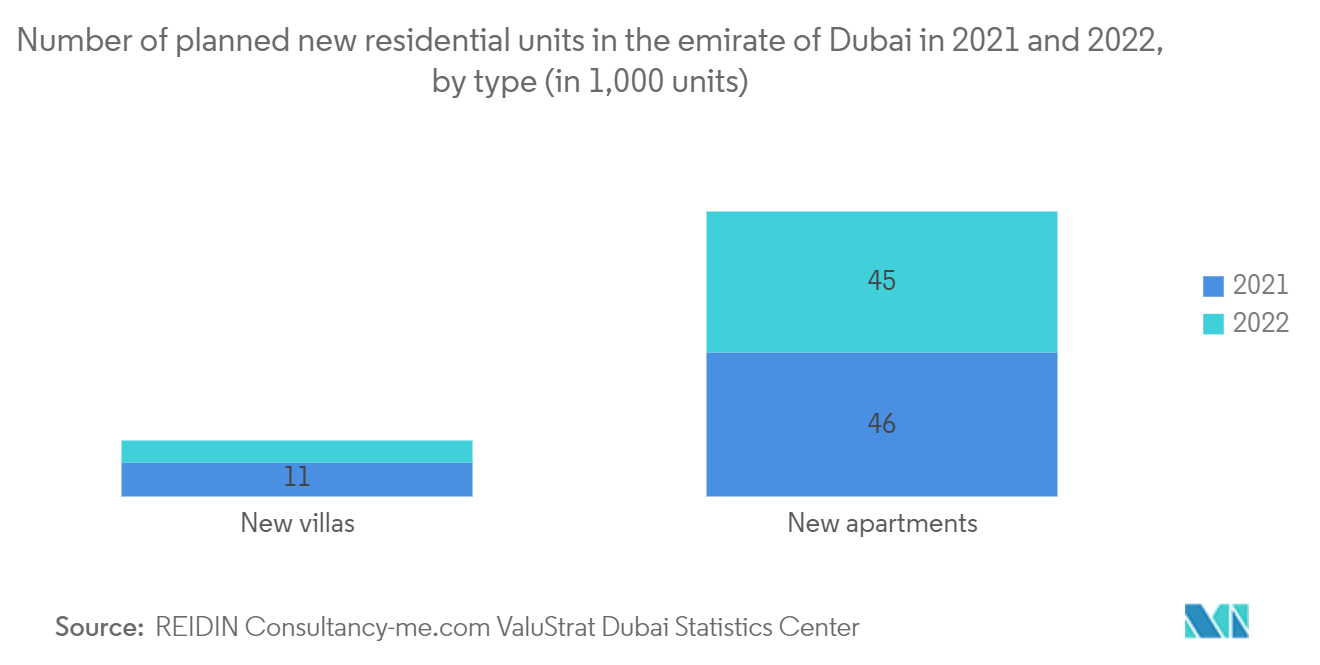
Competitive Landscape
The GCC green buildings market is fragmented due to the increasing government support for sustainable housing. Governments are introducing policies and regulations to stimulate the construction of eco-friendly buildings. The demand for green buildings is also driven by increasing awareness of climate change. Some of the key players include Bauder Ltd, AECOM, Skanska, Turner Construction, and DuPont de Nemours Inc.
GCC Green Buildings Industry Leaders
-
Alumasc Group plc
-
Kingspan Group plc
-
Bauder Limited
-
Forbo International SA
-
Interface Inc
- *Disclaimer: Major Players sorted in no particular order
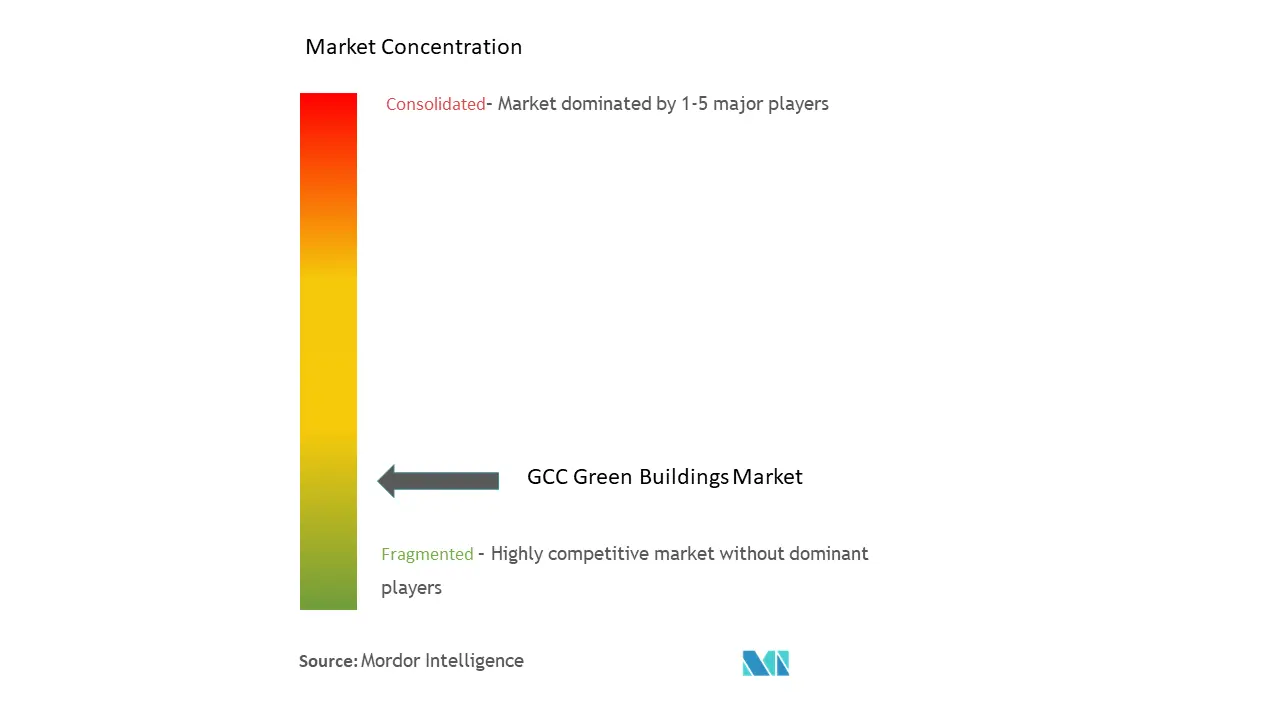
Recent Industry Developments
- February 2024: The Municipality and Planning Department in Ajman announced that the emirate's total number of green buildings hit 8,335 based on the green building standards for residential buildings. This aligns with the state’s directives and embodies the methodologies adopted in the Year of Sustainability, which continues its journey for the second consecutive year, emphasizing its tangible positive results.
- December 2023: SEE Holding, the United Arab Emirates' first sustainably focused global holding group aiming to spearhead a net zero emissions future, and EnerTech, a Kuwait-based innovator, investor, and developer of end-to-end sustainable solutions, revealed plans to develop a sustainable city in Kuwait. The new development, announced on the sidelines of COP28 in Dubai, is expected to redefine urban living in Kuwait, enabling residents to significantly reduce their environmental impact with innovative clean energy, waste management, and resource conservation solutions and delivering social and economic sustainability.
GCC Green Buildings Market Report Scope
Green buildings are integral to creating sustainable and efficient structures, impacting design, construction, maintenance, and renovation. They are known for their high energy efficiency and utilization of renewable waste sources. These materials encompass various options, including mycelium, hempcrete, recycled plastic, straw bales, bamboo, wood, rammed earth, timbercrete, and grasscrete, offering eco-friendly alternatives for construction.
A complete background analysis of the GCC green buildings market, including the assessment of the economy and contribution of sectors in the economy, market overview, market size estimation for key segments, emerging trends in the market segments, market dynamics, and geographical trends, and COVID-19 impact, is covered in the report.
The green buildings market is segmented by product type (exterior products, interior products, and other product types (building systems, solar systems, etc.)), application (residential, office, retail, institutional, and other applications), and geography (United Arab Emirates, Saudi Arabia, Qatar, and Rest of GCC). The report offers market size and forecasts for the GCC green buildings market in value (USD) for all the above segments.
| Exterior Products |
| Interior Products |
| Other Product Types (Building Systems, Solar Systems, etc,) |
| Residential |
| Office |
| Retail |
| Institutional |
| Other Applications |
| United Arab Emirates |
| Saudi Arabia |
| Qatar |
| Rest of GCC |
| By Product Type | Exterior Products |
| Interior Products | |
| Other Product Types (Building Systems, Solar Systems, etc,) | |
| By Application | Residential |
| Office | |
| Retail | |
| Institutional | |
| Other Applications | |
| Geography | United Arab Emirates |
| Saudi Arabia | |
| Qatar | |
| Rest of GCC |
Key Questions Answered in the Report
How big is the GCC Green Buildings Market?
The GCC Green Buildings Market size is expected to reach USD 39.72 billion in 2025 and grow at a CAGR of 10.96% to reach USD 66.82 billion by 2030.
What is the current GCC Green Buildings Market size?
In 2025, the GCC Green Buildings Market size is expected to reach USD 39.72 billion.
Who are the key players in GCC Green Buildings Market?
Alumasc Group plc, Kingspan Group plc, Bauder Limited, Forbo International SA and Interface Inc are the major companies operating in the GCC Green Buildings Market.
What years does this GCC Green Buildings Market cover, and what was the market size in 2024?
In 2024, the GCC Green Buildings Market size was estimated at USD 35.37 billion. The report covers the GCC Green Buildings Market historical market size for years: 2020, 2021, 2022, 2023 and 2024. The report also forecasts the GCC Green Buildings Market size for years: 2025, 2026, 2027, 2028, 2029 and 2030.
Page last updated on:
GCC Green Buildings Market Report
Statistics for the 2025 GCC Green Buildings market share, size and revenue growth rate, created by Mordor Intelligence™ Industry Reports. GCC Green Buildings analysis includes a market forecast outlook for 2025 to 2030 and historical overview. Get a sample of this industry analysis as a free report PDF download.
